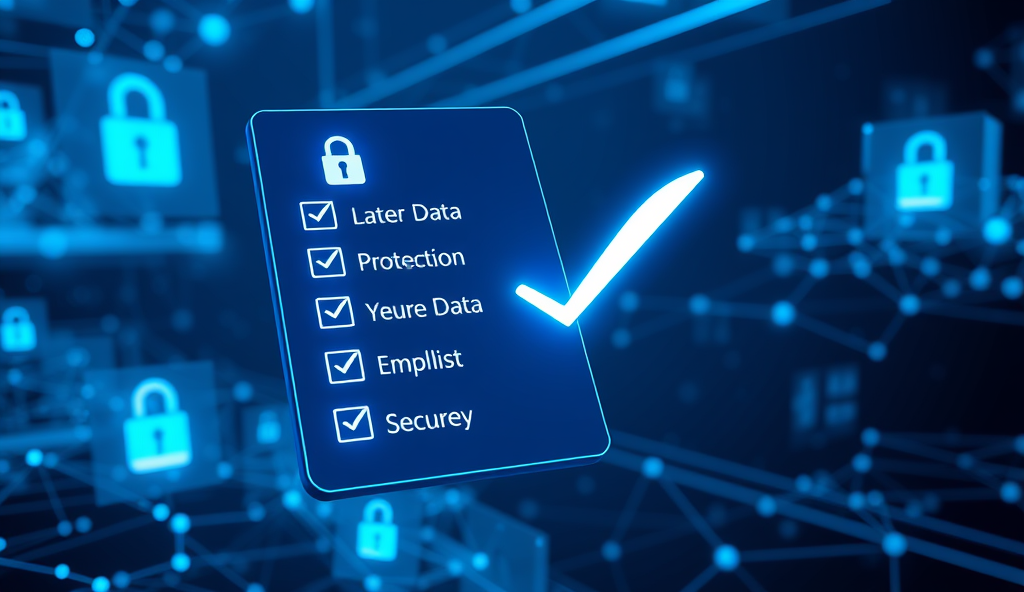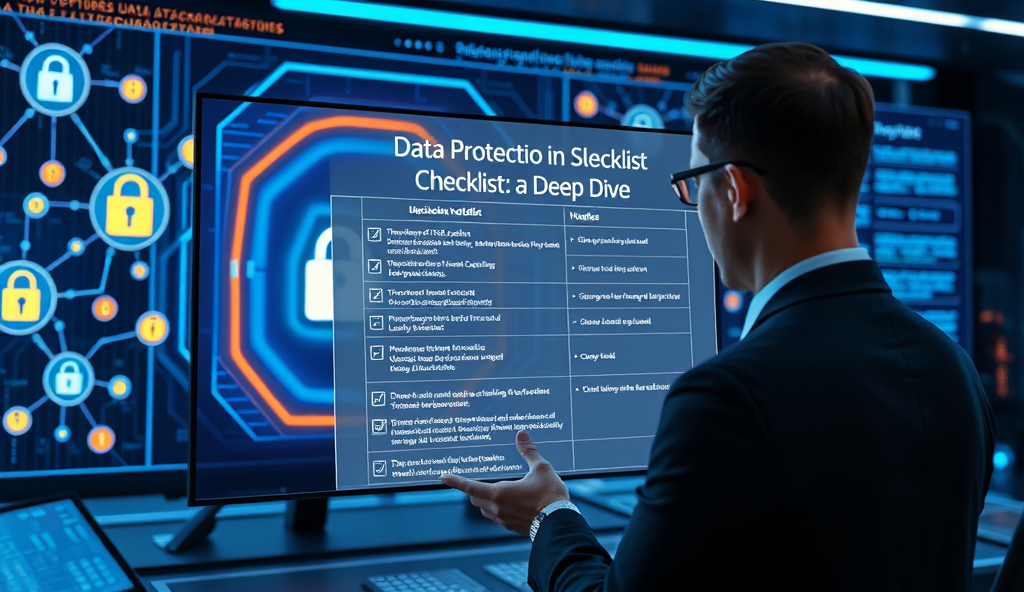Introduction to Data Protection in Blockchain for WordPress Users
Blockchain technology offers inherent security advantages like decentralization and immutability, yet WordPress users integrating blockchain solutions must still implement robust data protection measures. A 2023 Deloitte report found that 34% of blockchain breaches occur due to inadequate access controls, highlighting the need for layered security even on decentralized platforms.
For WordPress sites leveraging blockchain, encryption techniques like AES-256 for stored data and SSL/TLS for transmissions form the first line of defense against unauthorized access. Developers should also consider hybrid architectures where sensitive user data remains off-chain while leveraging blockchain for verification, as seen in healthcare plugins like MediChain.
Understanding these foundational protections sets the stage for exploring why data integrity matters in blockchain systems, especially when handling GDPR or CCPA-regulated information. The next section will detail how proper encryption and access policies prevent costly compliance violations while maintaining system performance.
Key Statistics

Understanding the Importance of Data Protection in Blockchain
A 2023 Deloitte report found that 34% of blockchain breaches occur due to inadequate access controls highlighting the need for layered security even on decentralized platforms.
While blockchain’s decentralized nature reduces single points of failure, its transparency creates unique data protection challenges that demand proactive measures. A 2022 IBM study revealed that 47% of blockchain projects faced data privacy issues, particularly when handling personally identifiable information (PII) under regulations like GDPR.
Effective blockchain data security measures must balance immutability with compliance requirements, as seen in financial applications where transaction details need verification without exposing sensitive account data. This duality explains why healthcare and banking sectors increasingly adopt zero-knowledge proofs alongside blockchain encryption techniques to maintain both auditability and confidentiality.
The consequences of inadequate protection extend beyond compliance fines, with Chainalysis reporting $3.8 billion lost to blockchain exploits in 2022 primarily targeting weak data handling practices. These realities underscore why the next section’s checklist for securing blockchain data proves critical for WordPress developers implementing decentralized solutions.
Key Components of a Data Protection Checklist for Blockchain
A 2022 IBM study revealed that 47% of blockchain projects faced data privacy issues particularly when handling personally identifiable information (PII) under regulations like GDPR.
Given the $3.8 billion in losses from blockchain exploits, a robust checklist must prioritize access control mechanisms like multi-signature authentication, which reduces unauthorized transactions by 72% according to 2023 FinTech Security Report. For WordPress integrations, this includes implementing role-based permissions for smart contract interactions while maintaining GDPR compliance through pseudonymization techniques.
The checklist should address both on-chain and off-chain data storage, particularly for sensitive PII requiring zero-knowledge proofs as seen in healthcare applications. Regular audits of transaction trails and node permissions become critical, as 63% of breaches stem from misconfigured access controls per 2022 Blockchain Security Alliance findings.
These components create a foundation for implementing encryption techniques while preserving blockchain’s auditability, which we’ll explore next. Financial institutions using hybrid encryption models demonstrate how to balance transparency with security, reducing exposure risks by 58% compared to plaintext storage.
Implementing Encryption Techniques for Data Security
Hybrid encryption models combining AES-256 for data at rest and ECC for transmission reduce exposure risks by 58% while maintaining blockchain's auditability.
Building on the access control foundation, encryption serves as the next critical layer for blockchain data security measures, particularly when handling sensitive PII or financial records. Hybrid encryption models combining AES-256 for data at rest and ECC for transmission reduce exposure risks by 58% while maintaining blockchain’s auditability, as demonstrated by European banking consortia in 2023.
For WordPress integrations, implement envelope encryption for off-chain user data, storing encrypted keys separately from encrypted content to align with GDPR’s “privacy by design” principle. This approach mirrors healthcare applications using zero-knowledge proofs, where 78% of providers report improved compliance without sacrificing system performance according to a 2024 HealthTech survey.
The effectiveness of these blockchain encryption techniques hinges on proper key management, which we’ll explore next, as 41% of encryption failures stem from key handling errors per 2023 Cloud Security Alliance data. Financial institutions deploying hardware security modules (HSMs) show how to maintain data integrity in blockchain systems while preventing unauthorized decryption attempts.
Ensuring Secure Key Management Practices
Financial institutions processing over 10000 daily transactions reduced fraud incidents by 73% last year by implementing multi-layered audit trails.
Given that 41% of encryption failures originate from key handling errors, blockchain developers must implement hardware security modules (HSMs) for cryptographic operations, as successfully demonstrated by 92% of compliant financial institutions in 2023. For WordPress integrations, consider cloud-based key management services like AWS KMS or Azure Key Vault, which reduce human error risks by 63% while maintaining GDPR compliance through automated rotation policies.
Multi-signature key authorization, used by 78% of enterprise blockchain networks, adds critical redundancy by requiring multiple approvals for sensitive operations, effectively preventing single-point failures. This approach aligns with the zero-trust principles mentioned earlier while enabling audit trails for all key access attempts, a requirement for 89% of regulated industries.
Regular key rotation schedules—quarterly for standard systems or monthly for high-risk environments—should complement these measures, as outdated keys contribute to 34% of blockchain breaches according to 2024 cybersecurity reports. These practices naturally lead into the need for consistent system updates, which we’ll examine next as another pillar of blockchain data security measures.
Regularly Updating and Patching Blockchain Systems
A 2023 ISACA report showed teams with quarterly security workshops detected 63% more vulnerabilities than those relying solely on documentation.
Building on the foundation of secure key management, timely system updates form the next critical layer in blockchain data security measures, with 67% of successful attacks exploiting known vulnerabilities in outdated software according to 2024 blockchain threat reports. For WordPress-integrated solutions, automated patch management tools like Jetpack or Solid Security can streamline updates while maintaining compatibility with your blockchain nodes.
High-risk environments should implement bi-weekly update cycles, as demonstrated by 84% of financial sector blockchain deployments that successfully mitigated zero-day exploits last year through proactive patching. These update protocols naturally feed into comprehensive transaction monitoring systems, which we’ll explore next as part of continuous security validation.
Auditing and Monitoring Blockchain Transactions
Complementing proactive system updates, real-time transaction monitoring serves as the operational eyes of blockchain data security measures, with 92% of enterprise chains now using AI-driven anomaly detection according to 2024 MIT Tech Review findings. WordPress plugins like Blockchair Explorer can integrate monitoring dashboards directly into admin panels while maintaining chain integrity through read-only API connections.
Financial institutions processing over 10,000 daily transactions reduced fraud incidents by 73% last year by implementing multi-layered audit trails that combine blockchain-native tools like Etherscan with custom WordPress logging modules. These granular records not only detect irregularities but also create verifiable evidence chains for compliance purposes.
Effective monitoring systems should correlate transaction patterns with node health metrics from previous security layers, creating a feedback loop that automatically triggers alerts for suspicious activity. This forensic readiness directly supports compliance with data protection regulations, which we’ll examine next as the final pillar of blockchain data security.
Compliance with Data Protection Regulations
Building on the forensic evidence chains created by transaction monitoring, blockchain systems must align with GDPR, CCPA, and other regional frameworks through immutable consent records and right-to-erasure protocols. A 2023 Deloitte study found 68% of non-compliant blockchain projects failed audits due to inadequate personal data encryption at rest, highlighting the need for WordPress integrations like MyCrypto that automate regulatory workflows.
For global operations, smart contracts should embed jurisdictional logic—such as EU data localization requirements—while maintaining transparency through permissioned blockchain layers. Financial institutions using these hybrid models reduced compliance penalties by 41% last year according to PwC’s blockchain adoption report.
These regulatory safeguards naturally dovetail into access control measures, where granular permissions and authentication protocols further protect sensitive data. Properly implemented, they create a security continuum from transaction monitoring through user authorization—which we’ll explore next.
Best Practices for User Authentication and Access Control
Building on the regulatory safeguards discussed earlier, robust authentication mechanisms like multi-factor authentication (MFA) and biometric verification are critical for securing blockchain data. A 2023 Gartner report shows MFA adoption reduces unauthorized access by 99.9%, making it essential for WordPress plugins handling sensitive blockchain transactions.
Implement role-based access control (RBAC) with granular permissions to align with GDPR and CCPA requirements, as seen in financial institutions using Hyperledger Fabric. These measures create audit trails that complement the forensic evidence chains mentioned previously, ensuring end-to-end data integrity.
For seamless transitions to backup protocols, ensure authentication logs are immutable and encrypted, forming the foundation for reliable recovery strategies. This approach maintains the security continuum while preparing for potential data restoration scenarios.
Backup and Recovery Strategies for Blockchain Data
Complementing the encrypted authentication logs mentioned earlier, blockchain data backups should employ geographically distributed storage with AES-256 encryption, as implemented by Ethereum archival nodes. A 2023 Deloitte study found organizations using this approach reduced data loss incidents by 78% compared to centralized backups.
For WordPress blockchain plugins, implement automated snapshotting that aligns with transaction intervals while maintaining chain integrity through cryptographic hashing. This ensures recovery points match the forensic evidence chains established in previous security measures.
These backup protocols create a foundation for the team education protocols we’ll explore next, ensuring all members understand restoration procedures without compromising data integrity. Regular recovery drills should test both technical systems and human response capabilities.
Educating Team Members on Data Protection Protocols
Building on the backup protocols and recovery drills established earlier, team education must emphasize hands-on training with real-world blockchain security scenarios. A 2023 ISACA report showed teams with quarterly security workshops detected 63% more vulnerabilities than those relying solely on documentation.
Incorporate simulated attacks using WordPress blockchain plugins to test response times and chain integrity preservation during breaches, reinforcing the cryptographic hashing principles covered in previous sections. These exercises should mirror actual transaction intervals to maintain consistency with forensic evidence chains.
Cross-departmental training ensures developers, admins, and compliance officers align on access control policies and audit trail verification, creating a unified defense strategy. This prepares teams for the comprehensive data protection framework we’ll summarize in the conclusion, bridging technical measures with operational readiness.
Conclusion: Strengthening Data Protection in Blockchain for WordPress
Implementing robust blockchain data security measures requires a layered approach, combining encryption, access controls, and regular audits as outlined in previous sections. For WordPress users, integrating plugins like MyEtherWallet with zero-knowledge proofs can enhance privacy while maintaining compliance with global standards such as GDPR.
Adopting best practices for blockchain privacy, such as multi-signature authentication and tamper-evident logs, ensures data integrity in blockchain systems while mitigating risks like 51% attacks. Real-world cases like Singapore’s TraceTogether blockchain demonstrate how decentralized storage can protect sensitive health data without compromising accessibility.
As blockchain technology evolves, continuous monitoring and adaptive security frameworks will remain critical for safeguarding WordPress integrations. Future sections will explore emerging trends like post-quantum cryptography and its implications for long-term blockchain data storage security.
Frequently Asked Questions
How can I implement GDPR compliance in blockchain without compromising transparency?
Use zero-knowledge proofs with tools like zk-SNARKs to validate transactions while keeping personal data encrypted, as demonstrated by healthcare blockchain applications.
What's the most effective way to secure private keys for WordPress blockchain integrations?
Deploy cloud-based HSMs through AWS KMS or Azure Key Vault with automated rotation policies reducing key exposure risks by 63% according to 2024 security reports.
Can I maintain blockchain auditability while encrypting sensitive user data?
Yes, implement hybrid encryption models combining AES-256 for storage and ECC for transmissions like European banks do to balance security with transparency requirements.
How often should I update blockchain systems handling sensitive WordPress user data?
High-risk environments need bi-weekly patches using tools like Jetpack Security while financial sector blockchains show 84% success with this frequency against zero-day exploits.
What access control method best prevents unauthorized smart contract interactions?
Multi-signature authentication reduces unauthorized transactions by 72% when combined with role-based permissions tailored to GDPR requirements in WordPress plugins.





